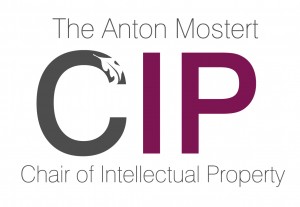
We all know GOOGLE. It is a facility that enables us to source information on the internet. The word GOOGLE indicates the identity of a particular service provider and distinguishes those services from similar services rendered by others, such as YAHOO. Each service provider designates its particular services by means of such a mark. The word GOOGLE is a brand or trade mark fulfilling its role as a “badge of origin”. It is exceptionally well known, world-wide. This renown or repute has been brought about by extensive public exposure of the mark to the public through use of it in advertising, on banners and on product packaging etc. It is a house-hold word.
GOOGLE is one of the largest and most successful multi-national companies. Have you ever paused to wonder what its most valuable asset is? Is it the massive bank of computer hardware, its portfolio of software, or its real estate holdings? No, it is the trade mark GOOGLE. This trade mark has been valued at $44.3 billion and is rated as the most valuable trade mark in the world. It constitutes nearly a third of the company’s total value.
A trade mark is created and sustained by being used in trading activities, i.e. in advertising, on labels etc. The strength and value of a trade mark is dependant on the extent of its use. If such use is discontinued, the trade mark will wither and die. Think of trade marks like STUDEBAKER for cars, INSTAMATIC for cameras, CAVALLA of cigarettes, IPANA for tooth paste. They were all famous in their day but they have now been extinguished on account of non-use. Like flares shot into the night sky, they have burned brightly for a while but have faded away to nothing. Trade marks die if they are not used. Valuable items of property are destroyed in this manner.
This scenario is about to unfold before our very eyes.
A global war has broken out against smoking and tobacco products. Instigated by the World Health Organization. Countries, South Africa included, have banned advertising and promotion of tobacco products and brands. This has severely dented the usage of tobacco trade marks. The war has now entered a new phase and a second offensive has been launched with Australia at the forefront. Other countries are following it into battle and the South African government has indicated that it will soon take up arms and join them.
The new offensive attacks the use of brands on the packaging of tobacco products, by means of legislation banning pictorial trade marks. The Australian so-called “plain packaging” legislation allows the use of only word trade marks, in plain print of very small size, against a faun coloured background, to appear, along with anti-smoking wording and lurid pictures of potential damage to health, on the product packaging. This legislation sounds the death knell of all logo and label trade marks, most of which are registered separately under trade marks legislation. Such trade marks are, by virtue of their enforced discontinuation of use, destroyed, literally by the stroke of a pen. Valuable items of property are summarily obliterated. This form of mass extermination amounts to brand genocide.
The question may be asked whether it is equitable and reasonable that valuable items of intellectual property should be destroyed in this manner in pursuit of the goal of curtailing smoking. Is diminishing the ability of the public to distinguish the cigarettes produced by one company from those produced by another company, in other words curtailing the function of a trade mark as a “badge of origin”, likely to stop new smokers from entering the market? Is this destruction of property by the state lawful?
Major international tobacco companies brought this question before the Australian Supreme Court in a challenge to the constitutional validity of the plain packaging legislation. It was argued that the legislation infringed against the clause of the Australian constitution that protects private property. The court conceded that the prevention of the use of trade marks amounted to the “taking” of property from the trade mark owners but found that such action did not give rise to the “acquisition” of that property by the State as contemplated by the property clause. It therefore held the legislation to be constitutionally valid.
The decision of the Australian court precipitated victory celebrations around the world, including in South Africa, as though VE Day had arrived. The assumption was made that if plain packaging legislation could survive a constitutional challenge in Australia, it necessarily follows that the same will apply in other countries. Following this decision the South African Minister of Health glibly stated that this country will emulate the Australian legislation and a draft bill to this effect is expected any day.
Is our Minister being too gung ho and jumping to conclusions too hastily? The property clause in our constitution differs significantly from the equivalent clause of the Australian constitution. Our property clause provides essentially that no law can permit an arbitrary deprivation of property and that, moreover, if a deprivation of property amounts to expropriation, reasonable compensation must be paid. Compared to the Australian constitution, the emphasis is on the deprivation of property rather than on its acquisition by the state.
There can be little doubt that preventing trade marks from being used, and thereby destroying them, amounts to a deprivation of property. The crucial question is whether, in the circumstances of the matter, the deprivation is arbitrary as contemplated by the property clause. “Arbitrary” in this context has been interpreted to mean that there is no sufficient correlation between the objective sought to be achieved and the deprivation of the property. It is felt that the mere presence of a logo, as distinct from a word trade mark in plain print (which is allowed), on a cigarette pack is unlikely to be the root cause of a non-smoker deciding to take up smoking. The destruction of a logo trade mark is thus arbitrary in the context.
There is legal authority for the proposition that the total destruction or nullification of property, which does not entail the passing of ownership of it to the state, can amount to expropriation of that property. This is certainly the situation that prevails in the present instance. Is the Minister willing to pay compensation to the tune of millions of Rand for every trade mark destroyed? Brand genocide could turn out to be an expensive exercise!
It therefore appears that, if the Minister goes ahead with his proclaimed intention of cloning the Australian plain packaging legislation, he is likely to encounter a strong challenge that his legislation is unconstitutional. The battle won against tobacco trade marks in Australia is thus only of local significance and a fresh battle, with a different outcome, may be looming in South Africa.
The moral of the story is that, if the Minister wants to curtail smoking, and really believes that this is achievable by means of legislation, he should look elsewhere than at trade marks (which are but irrelevant pawns in the game) in order to achieve his objective.
Prof. OH Dean
(Based on his inaugural lecture delivered at Stellenbosch University on 21 May 2013)
A NOTE FROM THE VineOracle
As Prof Dean points out, GOOGLE is the most valuable trade mark (or trademark for our American readers) in the world in 2013. This fact is established by the authority on brand valuation, namely BrandFinance in a report on the global value of trade marks, commissioned by Forbes. However, the trade mark value of a company must be distinguished from its brand value. Brand value refers to the commercial value of the company’s presence in trade at the moment and considers additional factors besides the value of the trade mark to calculate the dominance of a particular brand. Depending on which factors (other than the established trade mark value) are included in the brand valuation and the method of calculation (which are proprietary and includes subjective factors) the brand valuation may differ depending on the institution that produced the results. Conversely, the trade mark value for the global rankings is calculated according to the royalty relief valuation (the present value of the estimated future cash flows attributable to the brand, based on what a company without a trademark would have to pay to license it through a third-party broker) and focuses exclusively on the monetary value of the trade mark (or portfolio of marks) itself.
The difference between brand and trade mark valuation is clearly illustrated in the case of GOOGLE when considering the divergent outcomes of two separate brand valuation rankings for 2013.
According to Millward Brown’s BrandZ Top 100 listing (see infographic below), which considers a combination of the trade mark/financial value and the brand contribution (based on the consumer viewpoint) calculated as a dollar amount, GOOGLE ranks as the second most valuable brand ($113,669 m).
According to Brand Finance (who produced separate trade mark and brand value rankings), which uses a discounted cash flow technique to discount estimated future royalties to arrive at a net present value of the trademark and associated intellectual property (the brand value), GOOGLE ranks as the third most valuable brand ($52,132 m).





 Follow
Follow
